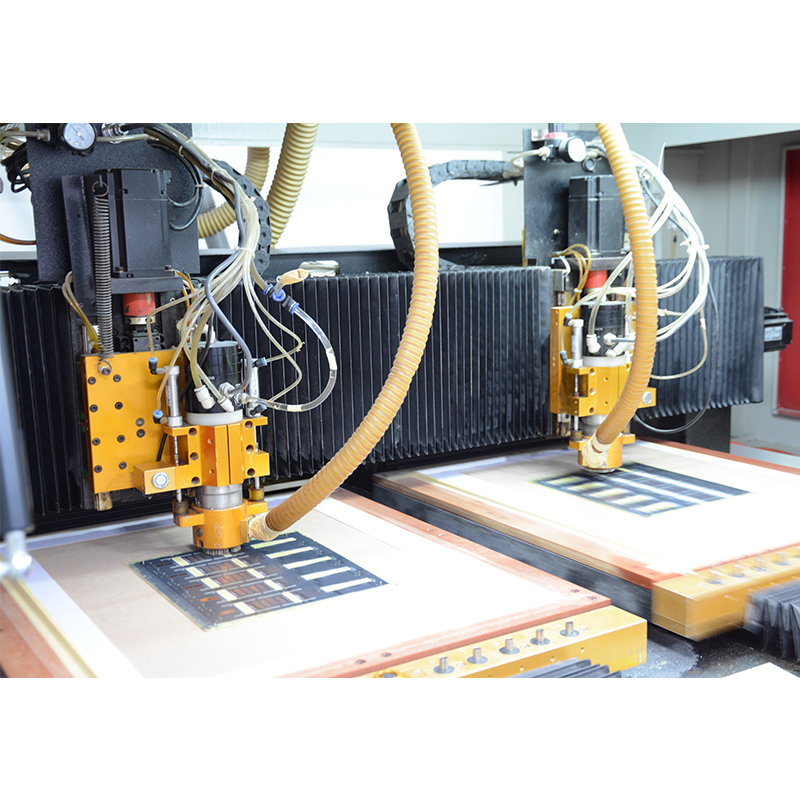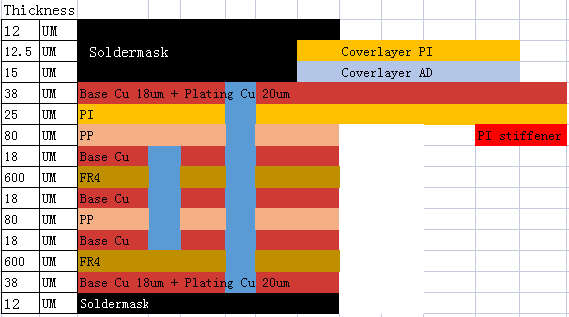One type of circuit board that is becoming increasingly popular in the electronics industry is the rigid-flex board.
When it comes to electronic devices like smartphones and laptops, the inner workings are just as important as the stylish exterior. The components that make these devices work are often hidden beneath circuit board layers to ensure their functionality and durability. But what materials are used in these innovative circuit boards?
Rigid-flex PCB combines the advantages of rigid and flexible circuit boards, providing a unique solution for devices that require a combination of mechanical strength and flexibility. These boards are particularly useful in applications involving complex three-dimensional designs or devices that require frequent folding or bending.
Let’s take a closer look at the materials commonly used in rigid-flex PCB construction:
1. FR-4: FR-4 is a flame-retardant glass-reinforced epoxy laminate material widely used in the electronics industry. It is the most commonly used substrate material in rigid-flex PCBs. FR-4 has excellent electrical insulation properties and good mechanical strength, making it ideal for rigid portions of circuit boards.
2. Polyimide: Polyimide is a high-temperature-resistant polymer that is often used as a flexible substrate material in rigid-flex boards. It has excellent thermal stability, electrical insulation properties and mechanical flexibility, allowing it to withstand repeated bending and bending without compromising the integrity of the circuit board.
3. Copper: Copper is the main conductive material in rigid-flex boards. It is used to create conductive traces and interconnections that allow electrical current to flow between components on a circuit board. Copper is preferred due to its high conductivity, good solderability and cost-effectiveness.
4. Adhesive: Adhesive is used to bond the rigid and flexible layers of the PCB together. It is critical to select an adhesive that can withstand the thermal and mechanical stresses encountered during the manufacturing process and equipment life. Thermoset adhesives, such as epoxy resins, are commonly used in rigid-flex PCBs due to their excellent bonding properties and high temperature resistance.
5. Coverlay: Coverlay is a protective layer used to cover the flexible part of the circuit board. It is typically made from polyimide or a similar flexible material and is used to protect delicate traces and components from environmental factors such as moisture and dust.
6. Solder mask: The solder mask is a protective layer coated on the rigid part of the PCB. It helps prevent solder bridging and electrical shorts while also providing insulation and corrosion protection.
These are the main materials used in rigid-flexible PCB construction. However, it is worth noting that the specific materials and their properties may vary depending on the board’s application and desired performance. Manufacturers often customize the materials used in rigid-flex PCBs to meet the specific requirements of the device they are used in.
In summary, rigid-flex PCBs are a remarkable innovation in the electronics industry, offering a unique combination of mechanical strength and flexibility. The materials used such as FR-4, polyimide, copper, adhesives, overlays, and solder masks all play a vital role in the functionality and durability of these boards. By understanding the materials used in rigid-flex PCBs, manufacturers and designers can create high-quality, reliable electronic devices that meet the demands of today’s technology-driven world.
Post time: Sep-16-2023
Back








